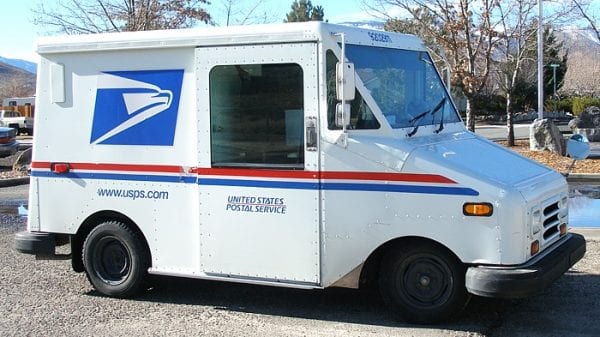
US Postal Service Still Losing, and Costing Billions
Taxpayers Protection Alliance
September 2, 2014

Efficiency is a key goal for any for any federal agency, or at the very least it should be. When there is a deficiency in efficiency, serious questions need to be asked, and tough choices need to be made. The United States Postal Service (USPS) is no exception, and it’s long overdue for a serious review and possible overhaul as the USPS keeps losing money.
The USPS recently posted their quarterly losses, and it wasn’t pretty, as the Wall Street Journal reported last month:
The U.S. Postal Service posted a third-quarter loss of $1.96 billion even as it increased revenue through price increases and a continued focus on shipping packages.
One of the biggest hurdles for USPS in getting the budget out of the red is the cost of health care. Congress has required USPS to pre fund their health care for 75 years in only 10 years. This means billions of dollars are needed each year to fund retiree benefits. House Oversight & Government Reform Chair Darrell Issa (R-Calif.) described the dire situation the agency faces as it struggles to meet the exorbitant costs of funding health care for employees:
“Additionally, next month the Postal Service will default on a $5.7 billion payment to the U.S. Treasury to fund retiree health care costs. This will be the fourth straight year in which the Postal Service has defaulted; together these defaults will cost taxpayers $22.4 billion.”
The increase in revenue was due mainly in part to increased prices on services; as Ron Nixon of The New York Times noted:
Post office officials attribute the growth to an increase in mail prices that started in January, new sales and marketing initiatives as well as continued growth in its shipping and packaging business.
Increased revenue and prices, yet another loss of over $1 billion in taxpayer money, how? The USPS isn’t managing itself very well and besides an outdated business model, they are guilty of the same kind of wasteful spending that TPA routinely highlights at other federal agencies. Take for example the story that just broke a few days ago, regarding some “lost equipment.” An Inspector General’s report detailed the loss of nearly $300,000 over lost trucks. The leased trailers were unaccounted for and could not be found, yet the USPS paid for leasing fees and titles for over two years:
Still, the post office paid leasing costs for the vehicles for two more years, to the tune of $250,000. “During that period, USPS attempted to locate the trailers but ‘the search did not reveal any records of trailer movements.’ At that point, the Postal Service opted to purchase the trailers, and paid their supplier more than $37,000 for the titles.”
Another roadblock to reform is Congress, shocking but true. While the USPS sought to make changes through consolidation as a means to streamline and save money, politicians in Washington looked to halt their efforts by blocking any facility closures. The Hill’s Bernie Becker reported on the move last month:
Exactly half of the Senate is calling on Congress to block the U.S. Postal Service from shuttering dozens of processing centers, saying such a move would hurt consumers that rely on the mail.
In a letter to appropriators, a bipartisan group of 50 senators said that any deal struck to fund the government this September should place a one-year moratorium on the service’s plans for consolidating its processing network.
Congress and unions have blocked attempts by USPS to halt Saturday delivery. According to Postmaster General Patrick Donahoe in a USA Today article, “one less day delivering letters, magazines, catalogs, ads and other mail would save $2 billion annually. ‘It’s an important part of our strategy to return to financial stability,’ he said.”
Even with revenue increases, the losses being incurred are still massive, and the problem may be getting worse for the USPS and taxpayers. Rich Smith at Daily Finance laid out a very real and very troubling scenario that is likely to occur as the USPS attempts to close their budget gap:
Think $2 billion in losses sounds bad? It’s about to get worse. A lot worse. Turns out, as the U.S. Postal Service has been working to close the gap between revenues and costs by plugging in low-margin package deliveries, all those packages have been straining the ability of USPS’ fleet of delivery trucks to carry them.
The USPS continues to lose money, which has been a cumulative loss of more than $25 billion in the last several years. The time for reform has come, and there must be serious efforts to change the way the USPS business model performs.
Working Americans shouldn’t continue to fund an agency that is losing billions, underperforming, and incapable of adapting to the changing industry environment.
